Daily life lifts off with 50-year-old Nasa
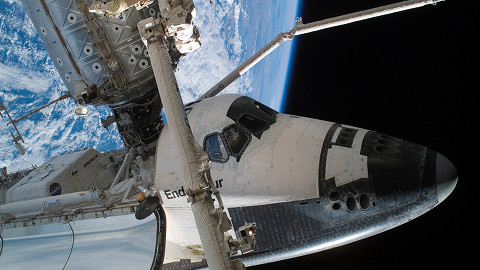
It takes ingenuity to walk on the moon or to probe Saturn's rings, but the same technology has also revolutionised our daily lives on Earth.
The National Aeronautics and Space Administration turns 50 years old on Wednesday. Funded by the United States government, the space agency sends men, women and satellites and probes into space.
Over the past decades Nasa has also helped launch a bevy of services, products and conveniences that influence us, even if we never see them.
Switzerland has played its own role. Not only has the country’s own astronaut explored the final frontier, but Switzerland has also contributed technology and ingenious products that have established practical footholds this side of the ionosphere.
But what was the original motivation for space exploration? The answer has to be: to show that the Americans were stronger than other nations.
If societies have always dreamt of reaching the heavens, it was military might that made it all possible.
Take the lunar rocket: its father was none other than German defector Wernher von Braun, a Nazi who supervised the construction of the sinister V2 missiles near the end of the Second World War. The first jet aircraft also came out of Nazi Germany.
As soon as the Axis powers were crushed, the Americans and Soviets embarked on a heated game of one-upmanship to see who could go the highest the fastest – and so the space race was born.
Getting there first
In the beginning, the Russians were ahead: the first satellite, the first man into space and the first space walk.
Nasa ran behind. The tides turned when US President John F. Kennedy promised in 1962 that an American would stand on the moon before the end of the decade.
The space race was also a proxy war of prestige and conviction. Each side believed better science, better technology and better pilots were proof of a better political system.
Fear too was a motivator; if the enemy got to the moon first, they could build a base with nuclear missiles aimed at our cities.
But times changed and in 1975 an astronaut and a cosmonaut shook hands after the Apollo module docked with the Soviet Soyuz spacecraft.
Today, the International Space Station welcomes astronauts from all of the world’s space powers – except the Chinese.
When George W. Bush promised that America would return to the moon by 2020, China began working to beat it.
Does history repeat itself?
Satellites and sunglasses
If earthlings can see live images of a spacewalking Chinese astronaut waving back to Beijing, if we can telephone to the other side of the planet, if our weather forecasts are reliable and if our cars can tell us to turn left in 50 metres, we have satellites to thank.
The services satellites provide play such a pervasive role in our daily lives now, even though nobody sees them but on the inkiest of nights as specks cruising across an infinite sky. And yet Sputnik, the ancestor of them all, is hardly older than Nasa itself.
Who thinks of astronauts when preparing a baby’s bottle? Giving spacemen adequate nutrition while on missions prompted science to extract rich, easy-to-digest vitamins from seaweed, a process now widespread in the production of baby formula.
A new generation of sunglasses with scratch-resistant and unbreakable lenses derived directly from the visors used on Nasa space suits.
Then there’s the fuel cell. Nasa didn’t invent it – the concept was discovered in 1839 – but thanks to the space program, it saw its first use. Tomorrow, those same cells may power cleaner cars.
Safe with space
In all, there are more than 1,500 technological advances born for space that make our daily lives easier.
For its 50th birthday, Nasa is offering on its website a retrospective of five decades of exploration, as well as the way the agency’s work affects life.
Examples are fire-resistant paint – originally designed for thermal shields on spacecraft to protect them from the heat of re-entry – and grooves on roads and runways that drain rainwater and reduce the risk of hydroplaning.
Nasa has equally brought much to medicine. Systems for monitoring vital signs of patients in intensive care were put into use in the 1960s by the first astronauts.
Nasa one day, not too long from now, could send humans to Mars the way it did for the moon. If they do, they’ll attempt to confirm the existence of water that a rover mission just discovered.
In the meantime, its probes continue to twirl among the stars while others have scanned the surfaces of all the planets in the solar system. One has looked at Titan, a Saturn moon, which could help us understand how life first appeared on Earth.
So who knows, maybe that one day we’ll shake ET’s hand.
swissinfo, based on an article in French by Marc-André Miserez
Nasa was created by Congressional vote in July 1958 to race the Soviet Union to space. The agency formally got to work on October 1 of that same year.
It is the largest space agency in the world today, with an annual budget of $17 billion (SFr18.7 billion), 19,000 employees and some 40,000 contract workers.
Outside its head office in Washington, the agency has ten centres across the United States including Cape Canaveral, Florida; Houston, Texas; and the Jet Propulsion Laboratory in California, where the bulk of the missions to Mars and other planets in the solar system are monitored.
July 20, 1969: Even before planting the American flag on the moon, Neil Armstrong and Buzz Aldrin deployed an aluminium sheet that was made in Switzerland to collect particles from solar wind.
Velcro was invented by a Swiss engineer in 1941 and has proven to be very practical for attaching objects to walls in weightlessness.
The legendary Omega Speedmaster watch has been to space on the wrist of many astronauts.
Astronaut Claude Nicollier from canton Vaud has been on four shuttle missions.
As a country recognized for its precision industry, Switzerland furnishes a number of mechanisms and engine parts, not only to Nasa but also to the European Space Agency.
The country also produces capsules for Ariane rockets, motors for Nasa’s Mars rovers, atomic microscopes, bioreactors for medical experiments aboard the International Space Station and atomic clocks for satellites in Europe’s future Galileo navigational system.

In compliance with the JTI standards
More: SWI swissinfo.ch certified by the Journalism Trust Initiative

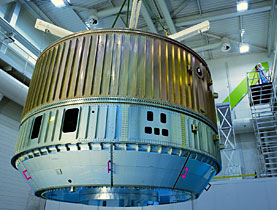
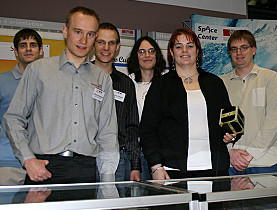
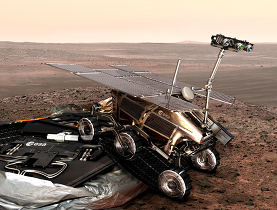
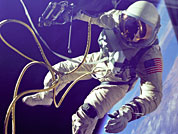
You can find an overview of ongoing debates with our journalists here. Please join us!
If you want to start a conversation about a topic raised in this article or want to report factual errors, email us at english@swissinfo.ch.